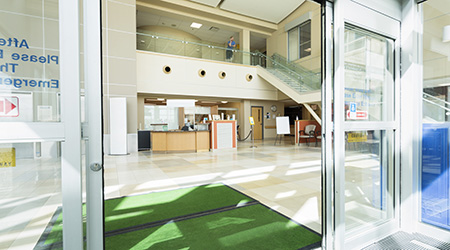
Keeping public facilities clean and safe for building visitors and occupants starts from the ground up; that’s right, the floors. A significant amount of dust and dirt is routinely tracked into facilities on people’s shoes. That amount increases, along with water, during wet weather. Dirty — or wet and dirty — floors will detract from a facility’s appearance, may damage flooring, and can directly impact safety as they can contribute to slip-and-fall accidents. Particles of tracked-in dirt, dust, pollen and other contaminants may also become airborne and can enter, accumulate in, and be distributed through heating, venting and air conditioning (HVAC) systems as well.
Daily actions such as sweeping, vacuuming and mopping, along with more intensive routine care — including stripping, buffing, polishing, and sealing for hard surfaces and steam cleaning for carpet — help to keep floors in peak condition. Well-maintained floors save facility customers money by reducing how often worn, damaged or stained flooring is replaced. Another tool building service contractors (BSCs) can be used to contribute to cleanliness, safety, and longevity of flooring is matting.
“Matting is the foundation of a clean, safe and cost-effective cleaning program,” says Nick Spallone, CEO, Tahoe Supply Company, Carson City, Nevada. “The current estimate for the cost of removing one pound of dirt in a commercial building is $600. Most of that dirt makes its way into a building by hitchhiking on the soles of people’s shoes. For every $1 spent keeping soil out of a building, a building service contractor will save up to $10 in its removal once it’s spread throughout the facility.”
Matting Based On Facility Type, Foot Traffic

 The Down and Dirty on Cleaning in Virus Season
The Down and Dirty on Cleaning in Virus Season How Surfactant Use is Expanding in Commercial Cleaning
How Surfactant Use is Expanding in Commercial Cleaning Maximize Your Margins: Learn How to Automate Pricing and Track Rebates
Maximize Your Margins: Learn How to Automate Pricing and Track Rebates